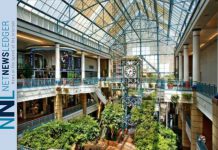WINNIPEG – OPINION – In cities across the world, a town square is a place for the public to gather, trade, and – at times of turmoil – demonstrate and protest. In cities across Europe, Asia, and the Americas, these are free spaces where people from all walks of life join together and do the hard work of the community.
Town squares usually feature markets, concerts, and stores, often surrounding a monument, fountain, or a clock.
In Europe, they’re everywhere – becoming the most popular space for tourists. In Asia and South America, they’re often wrapped up with religious meanings and have a church nearby. In the United States and Russia, town squares are highly politicized, featuring a statue of a pioneer, politician, or czar.
Town squares embody the history and principles of the community they reside in.
In an increasingly profit-based and globalized world, geared towards the upper class (called “gentrification”), these spaces are changing. In some cases, town squares are disappearing as nationalism gives way to citizens who pledge allegiances to corporations rather than countries (for proof, ask someone to recite the McDonald’s “Big Mac” song).
Winnipeg’s town square is Portage Place.
Unlike other cities – where town squares are outdoors – ours is predictably indoors, stretching between the clock and the fountain.
Portage Place is Winnipeg’s most multicultural hub. As I sat in the mall writing this column, I heard at least ten different languages and saw people from dozens of cultural communities.
Here there are businessmen, construction workers, and large groups of immigrant men and women, laughing and telling stories.
There are struggling businesses and empty storefronts, yes – the evidence of the growth of poverty and lack of economic traffic here. But, as one woman tells me, this is evidence that Portage Place is as much a meeting place as a buying place.
Portage Place is Winnipeg’s most multicultural hub. As I sat in the mall writing this column, I heard at least ten different languages and saw people from dozens of cultural communities.
There’s also a lot of security around too, and no shortage of people telling me about the crime here. One man, though, tells me he never sees fights inside, but outside, on the streets.
The fact is that thousands of citizens use Portage Place every day.
It’s not just poor people here, too – even though this is one of the only public spaces remaining after the Millennium Library instituted new security measures and places like Neechi Commons have closed.
Portage Place attracts everyone. Unlike the Forks – which caters primarily to tourists and people who can buy ten-dollar drinks – this is a place where people from all walks of life converge.
And, frankly, it’s a place where a lot of Indigenous people are.
Indigenous peoples use Portage Place, mostly to visit.
Across the table from me sits three elderly men speaking in Ojibway.
To the right is a kookum (grandmother in Cree) with her three grandchildren.
There are many young Indigenous people here too; on their phones, waiting for someone, or just hanging out.
When Indigenous peoples needed a place to kick off Idle No More in Winnipeg, where did we round dance first? That’s right; three thousand of us went to Portage Place.
There are struggling businesses and empty storefronts, yes – the evidence of the growth of poverty and lack of economic traffic here. But, as one woman tells me, this is evidence that Portage Place is as much a meeting place as a buying place.
This is Winnipeg’s town square.
Where will all of these people go when Portage Place is sold?
Much has been made over the past week about investment in Winnipeg’s downtown as Toronto-based Starlight investments bid nearly $70 million for Portage Place mall, promising to redevelop the space into new residential towers and some student housing.
It’s well known that the current owner of Portage Place refuses to invest in the space and has let maintenance issues pile up. Store owners are frustrated and there are long-standing safety issues that need addressing. Things have gotten so bad that the parkade, owned by the Forks North Portage Partnership, is the only profit-producing part of Portage Place left.
But this isn’t the only value of Portage Place.
Portage Place is about more than profit. It’s a place of accessibility – and one of the only such places left in our city. It’s well known that when public spaces are reduced, social problems and conflicts increase. If a community gives people no place to go, they make spaces anyways – sometimes forcibly and unexpectedly.
When Portage Place changes, it shouldn’t lose its best parts. It is Winnipeg itself.
Downtown apartments are fine, but these shouldn’t come at the cost of tossing people on the streets. High-end businesses are also fine, but not at the cost of marginalizing people who can’t afford them. And, of course, people who can pay high rates for space is fine, but let’s not forget the public in public space.
All Monday, I called departments at the city, social agencies, and those brokering the Portage Place deal, asking them where the people who use Portage Place will go. In each and every case, I got an “I don’t know.”
I’m not alone in this concern. All this week, Winnipeggers have been invited by the Downtown BIZ to visit their pop-up table at unit 137 in Portage Place to share their opinions. Citizens can also share input online.
There’s a Facebook group called “Humans of Portage Place” soliciting Winnipeggers’ stories of Portage Place and what should be done there. They intend on presenting these to city council on Thursday.
There is nothing wrong with investment, but profit without people is just exploitation. Portage Place is our place and shouldn’t become something it isn’t.
Winnipeg’s town square is changing. Let’s keep it the place community built.
 Niigaan Sinclair
Niigaan Sinclair
Originally appeared in the Winnipeg Free Press on July 15, 2019. Republished with the permission of the author





